This post may contain affiliate links. Please read my disclosure and privacy policy.
This post may contain affiliate links. Please read my disclosure and privacy policy.
Easy-as-can-be 4-ingredient 100% oat flour bread! It is vegan, oil-free, gluten-free, yeast-free, and nut-free. Use pre-made oat flour or grind your own, in seconds, with your blender (using rolled oats).
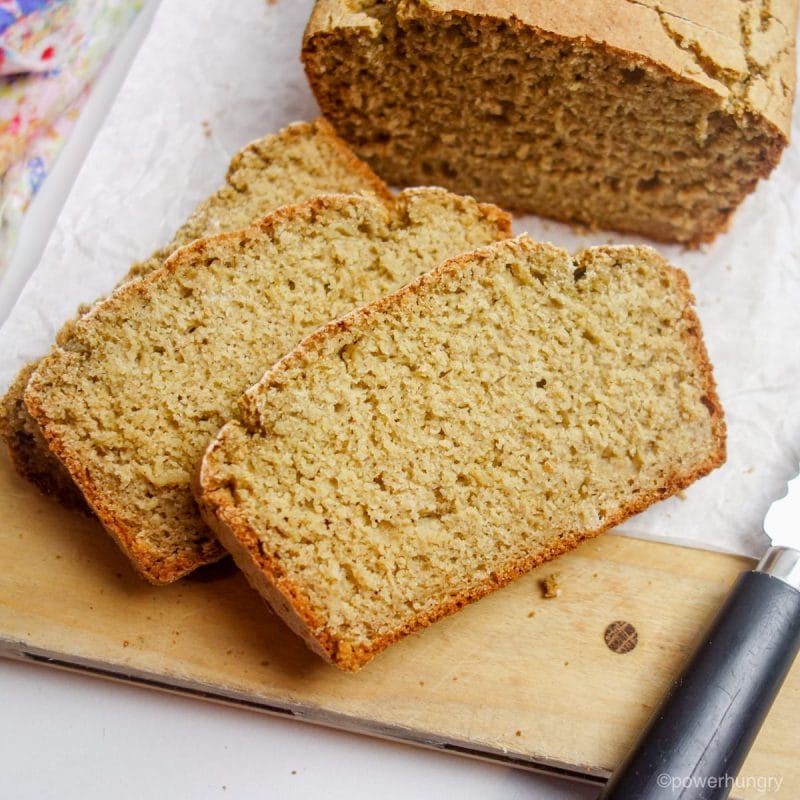
At last, a quick and easy loaf of bread made with 100% oat flour (no other flours, meals or binders)! And what a hearty, delicious loaf it is to eat–whether solo, in sandwiches, or as accompaniment to dinner.
If you do not have oat flour on hand, not worry: I have instructions below for making oat flour from the rolled oats you already have in your pantry.
Trust me, you will want to try this ASAP!

Table of Contents
- Recipe Benefits
- Ingredients
- Tip: Grind Your Own Oat Flour in a Blender
- How to Make 4-Ingredient 100% Oat Flour Bread
- Step One: Preheat Oven & Prepare Baking Pan
- Step Two: Combine the Milk & Vinegar
- Step Three: Whisk the Dry Ingredients
- Step Four: Stir in the Milk-Vinegar Mixture
- Step Five: Spread Batter into Prepared Pan
- Step Five: Bake the Bread
- Step Five: Cool the Bread
- FAQ and Substitutions
- How Should 4-Ingredient 100% Oat Flour Bread Be Stored?
- What is the Taste & Texture of the Bread?
- Can I Use Something Other Than Oat Flour?
- Can I Use Water in Place of Milk?
- What Can I Use in Place of the Vinegar?
- Related Recipes
- 4-Ingredient 100% Oat Flour Bread (V, GF, Oil-Free) Recipe
Recipe Benefits
This vegan oat flour bread is delicious & satisfying, as well as:
- 4 humble ingredients
- Vegan (egg-free, dairy-free)
- Gluten-free
- Oil-free
- Yeast-free
- Nut-free
- Free of added sugar
- Super easy to make
- Made in one bowl
Ingredients
The exact amounts of each ingredient are indicated in the recipe card at the end of the post.
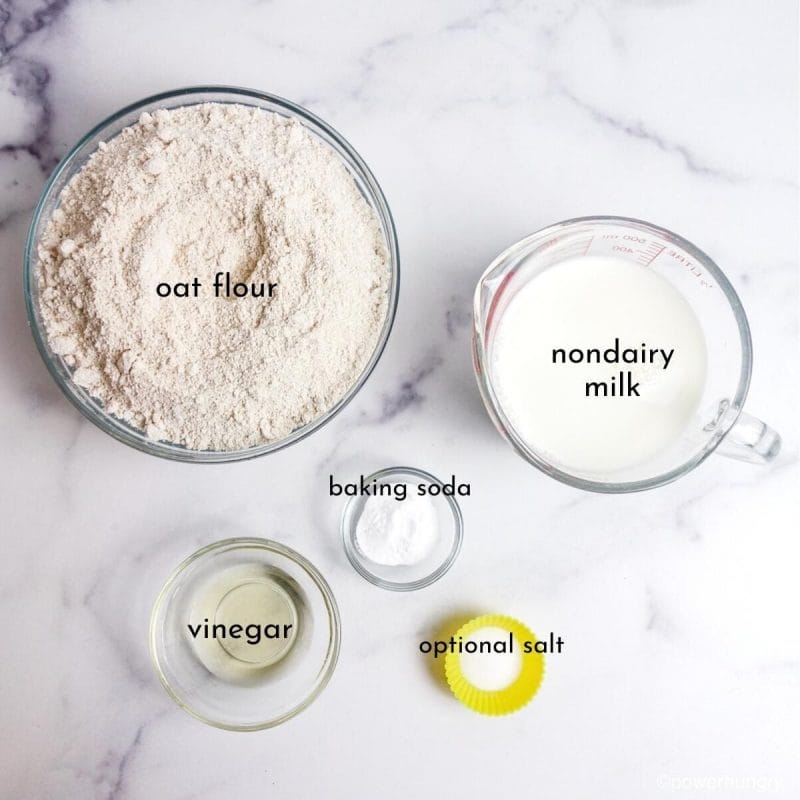
- Oat flour
- Certified gluten-free, as needed. Use packaged oat flour, or make your own from rolled oats (see the section below)
- Non-dairy milk
- For example, oat milk, soy milk, or almond milk. If you are not following a vegan diet, feel free to use an equal amount of dairy milk.
- Vinegar
- I use apple cider vinegar, but you can use any light-colored vinegar. Alternatively, substitute an equal amount of lemon juice or lime juice.
- Baking soda
- Be sure to use baking soda, not baking powder. The two ingredients have very different strengths.
Salt is an optional, but recommended (for flavor) ingredient.
Tip: Grind Your Own Oat Flour in a Blender
You can use ready-made oat flour in this recipe, but I prefer to make my own from rolled oats. It is less expensive and making it requires almost no time at all.
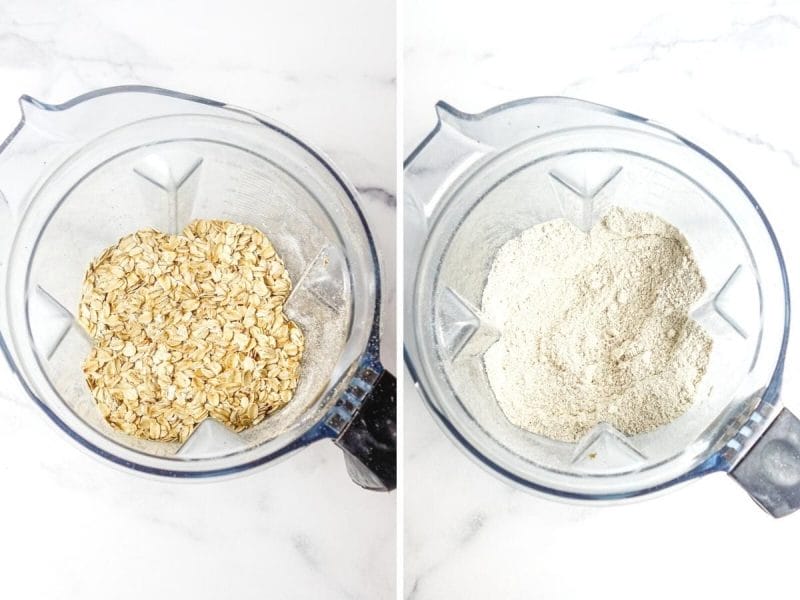
Use the same weight of oats as the amount of oat flour required for this recipe (360 grams). That is about 3 and 2/3 lightly packed cups of old-fashioned style rolled oats.
Place the rolled oats in your blender, press process or blend, and grind until the oats resemble super-fine flour. Note that you can also use a food processor to grind the oats. However, it will take a little bit longer (i.e., about a minute) to grind them into a super-fine flour.

How to Make 4-Ingredient 100% Oat Flour Bread
Note that the complete directions are also in the recipe card below.
Step One: Preheat Oven & Prepare Baking Pan
Preheat the oven to 350F (180C). Spray a 9×5-inch loaf pan with nonstick baking spray. If you do not want to use nonstick spray, use a nonstick baking pan or line the pan in parchment paper.
It is important to have the oven heated and ready to go as soon as the batter is mixed. This is, essential, an oat flour soda bread. The vinegar and baking soda react as soon as the batter is combined. The bread needs to get into the oven immediately to benefit from the full strength of the baking soda reaction.
Step Two: Combine the Milk & Vinegar
In a measuring cup or bowl, combine the milk and vinegar. Let stand for five minutes to allow the milk to curdle slightly.
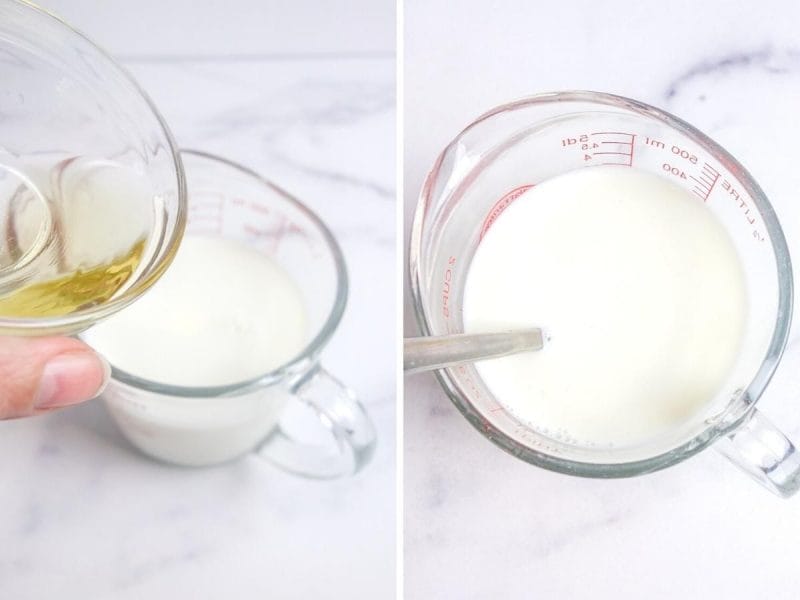
Step Three: Whisk the Dry Ingredients
In a large bowl, whisk the oat flour, baking soda and (optional) salt until blended.
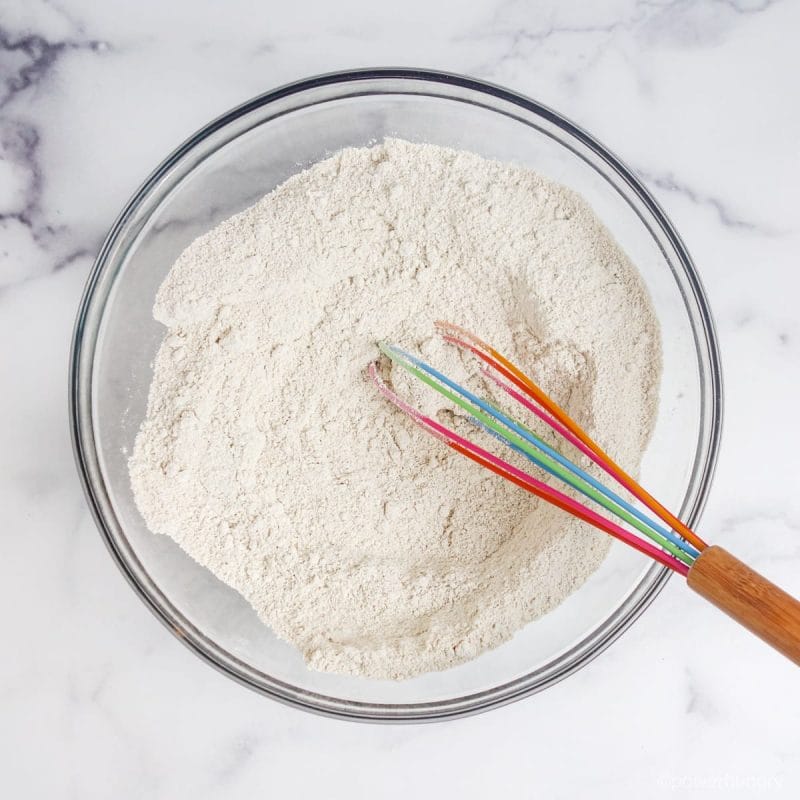
Step Four: Stir in the Milk-Vinegar Mixture
Add the milk-vinegar mixture to the bowl. Use a spoon or rubber spatula to stir until completely blended.

Step Five: Spread Batter into Prepared Pan
Pour and spread the batter into the prepared pan, smoothing the top.
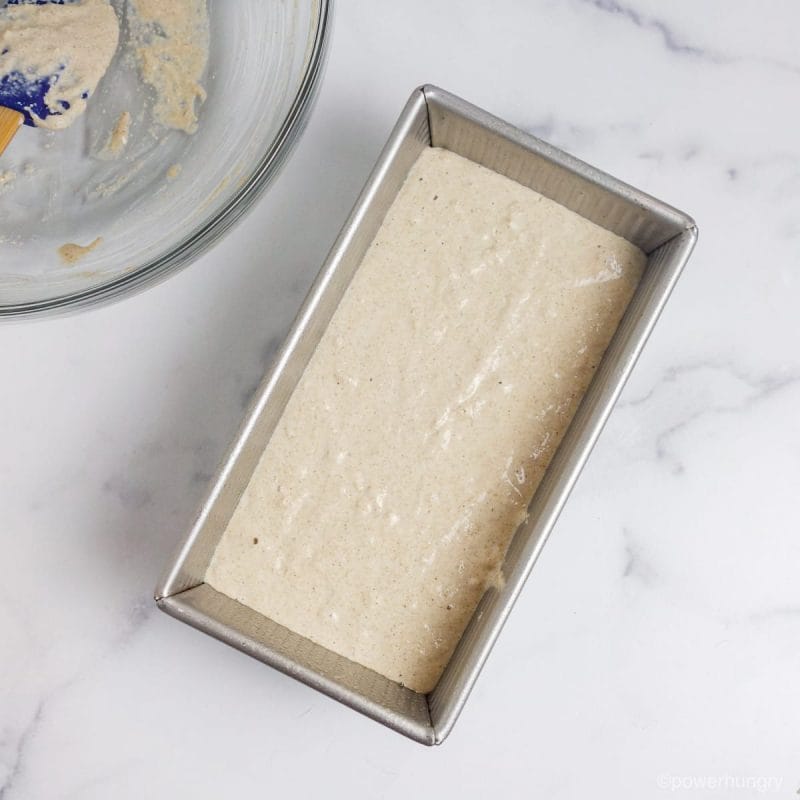
Step Five: Bake the Bread
Get the bread into the oven immediately (as mentioned above, the baking soda and vinegar react as soon as the batter is mixed; the batter will lose some of its rise if it is not place into the hot oven ASAP).
Bake the bread in the preheated oven for 55 to 60 minutes until deep golden brown, the top of the loaf has some cracks, and a toothpick inserted near the center of the loaf comes out with only a few moist crumbs attached.
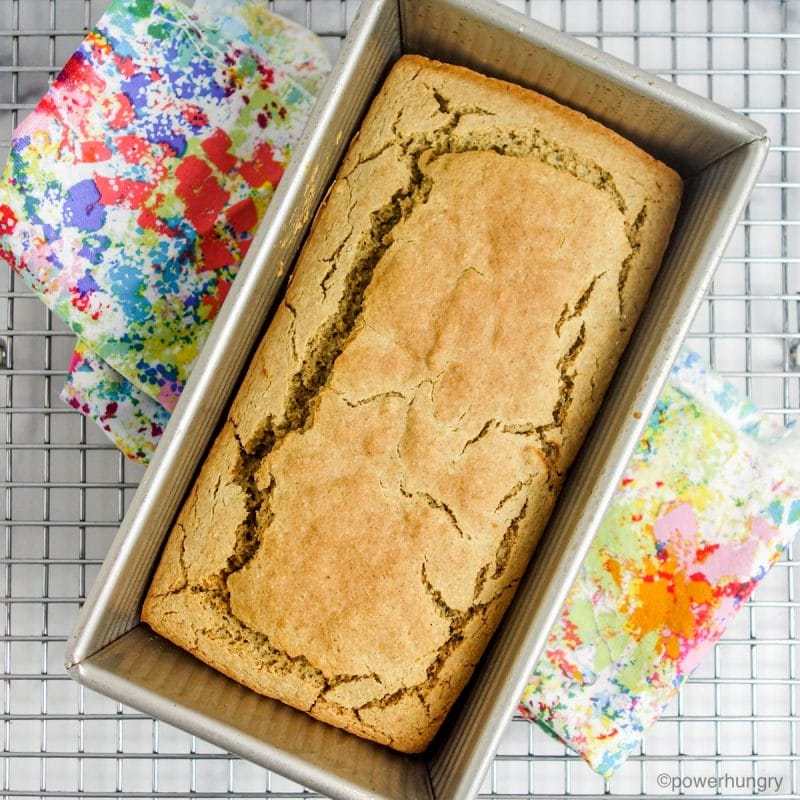
Step Five: Cool the Bread
Cool the bread in the loaf pan for 15 minutes. before removing and cooling completely on a cooling rack.

Tip: Cool the Bread Completely Before Slicing
Be sure to cool the bread completely before slicing it. The bread is much easier to slice when it is completely cooled. The bread is extremely easy to cut–including very thin slices–in the days after it is baked.
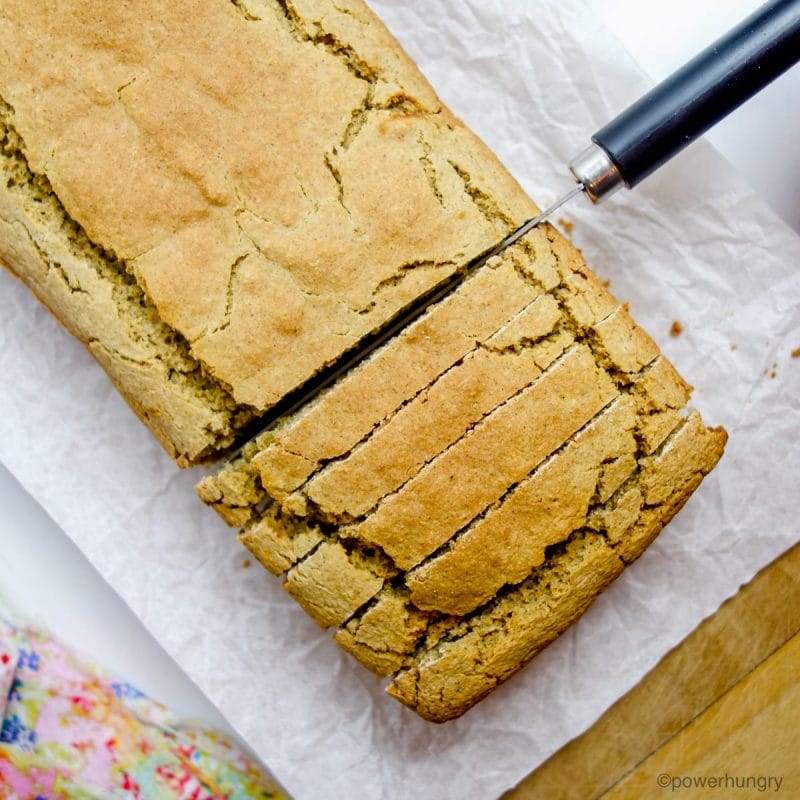
FAQ and Substitutions
How Should 4-Ingredient 100% Oat Flour Bread Be Stored?
Store the cooled bread in an airtight container at cool room temperature for two days, the refrigerator for one week or the freezer for up to six months.
What is the Taste & Texture of the Bread?
The bread has a wholesome, nutty flavor that is wonderful plain and exceptionally delicious when toasted. Enjoy it plain or add your favorite sweet or savory spreads and toppings.
The bread is easier to slice thin after a day of storage (the crust softens). Use the thinner slices to make all manner of sandwiches!
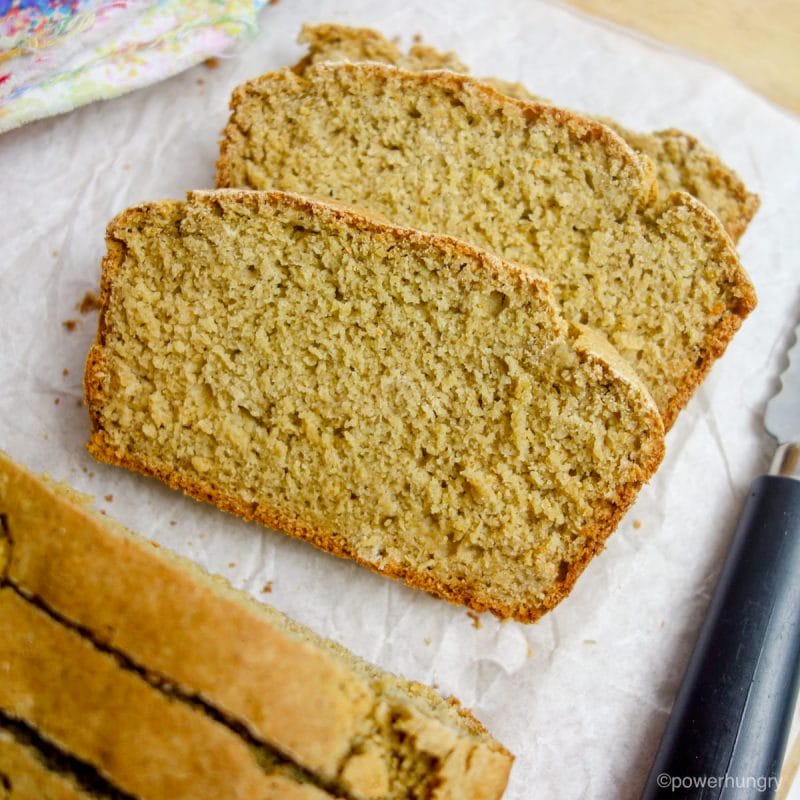
Can I Use Something Other Than Oat Flour?
I have only tested this with oat flour, so I advise sticking with oat flour. I have many bread recipes here on powerhungry® if you are looking for a bread recipe that uses a particular flour (use the search function to look up more options).
Can I Use Water in Place of Milk?
Yes, that should work. The bread may be marginally tougher, but still delicious. You will still need to add the vinegar (it activates the baking soda).
What Can I Use in Place of the Vinegar?
An equal amount of fresh lemon juice or lime juice can be used in place of the vinegar.
Happy baking!
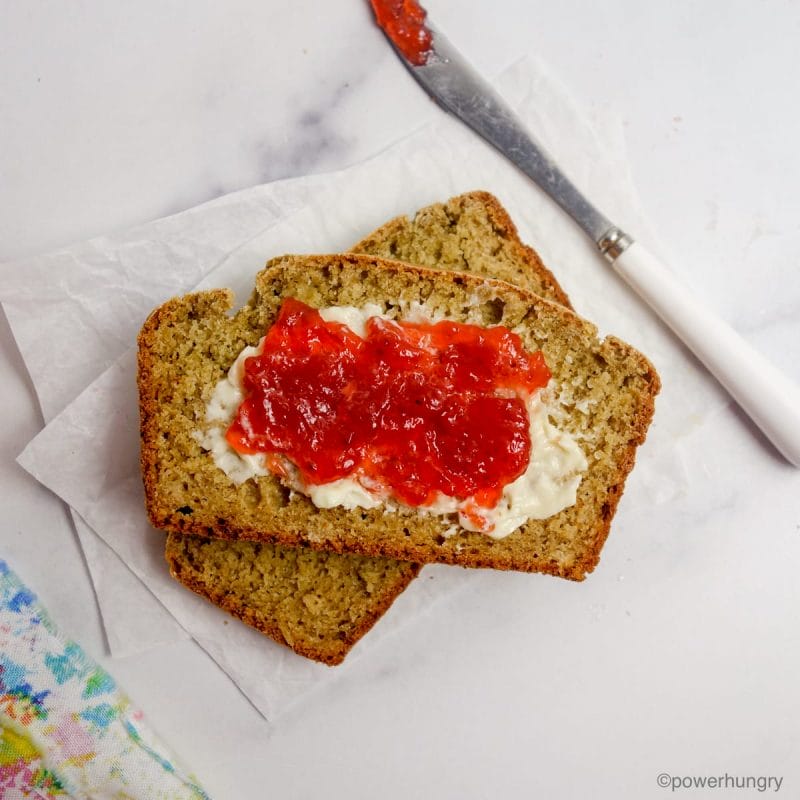
Related Recipes
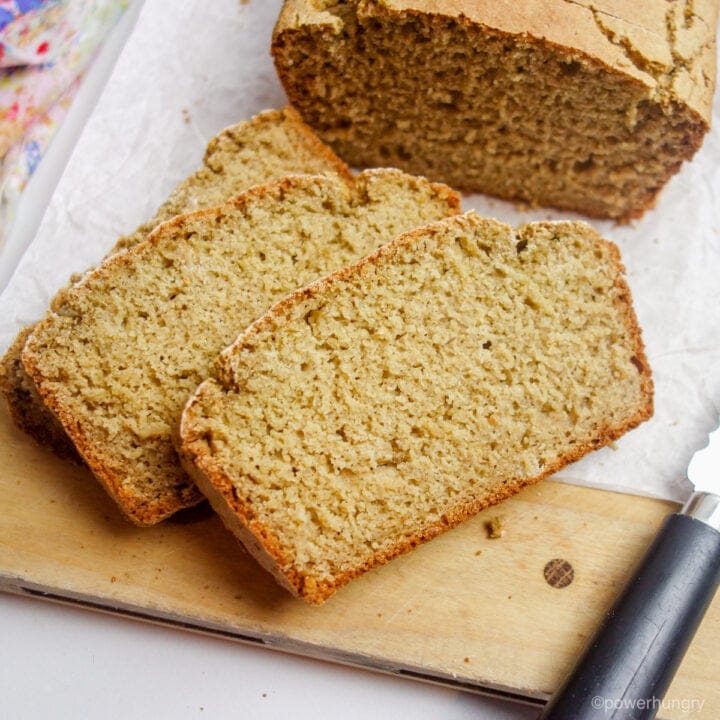
4-Ingredient 100% Oat Flour Bread (V, GF, Oil-Free)
Easy-as-can-be 4-ingredient 100% oat flour bread! It is vegan, oil-free, gluten-free, yeast-free, and nut-free. Use pre-made oat flour or grind your own, in seconds, with your blender (using rolled oats).
Ingredients
- 1 and 1/2 cups (355 mL) nondairy milk (or dairy, if not vegan)
- 1 and 1/2 tablespoons (22 mL) light colored vinegar
- 3 cups (360 g) oat flour (certified gluten-free, as needed)
- 1 teaspoon (4.8 g) baking soda
- Optional: 1/2 teaspoon salt
Instructions
- Preheat the oven to 350F (180C). Spray a 9x5-inch (22.5x12.5 cm) loaf pan with nonstick cooking spray (alternatively, use a nonstick baking pan or line with parchment paper).
- In a glass measuring cup or small bowl, combine the milk and vinegar. Let stand for 5 minutes to curdle.
- In a large bowl, whisk the oat flour, baking soda, and (optional) salt until blended.
- Add the milk-vinegar mixture, stirring until completely blended and smooth.
- Immediately spread batter evenly in prepared pan, smoothing the top.
- Bake in the preheated oven for 55 to 60 minutes until deep golden brown, cracked on top, and a toothpick inserted near the center comes out with only a few moist crumbs attached.
- Cool the bread in the pan for 15 minutes before removing to a cooling rack. Cool completely before slicing.
Notes
Storage: Store the cooled oat bread in an airtight container at cool room temperature for 3 days, the refrigerator for 1 week or the freezer for up to 6 months.
DIY Oat Flour: You can buy oat flour, but I typically make my own from rolled oats. It is easy. Use an equal weight of rolled oats (360 grams), which is about 3.67 cups of lightly packed old-fashioned rolled oats. Blend the dry oats in a blender until they are a very fine flour (it takes seconds).
Vinegar Options: You can use any light colored vinegar, or substitute an equal amount of lemon juice or lime juice.
Nutrition Information
Yield 14 Serving Size 1Amount Per Serving Calories 96Total Fat 2gSaturated Fat 0gTrans Fat 0gUnsaturated Fat 2gCholesterol 0mgSodium 95mgCarbohydrates 16gFiber 2gSugar 1gProtein 3g
The nutritional information is provided as a courtesy and is an estimate only. This information comes from online calculators. Although powerhungry.com attempts to provide accurate nutritional information, these figures are only estimates. Varying factors such as product types or brands and optional ingredients can change the nutritional information in any given recipe.

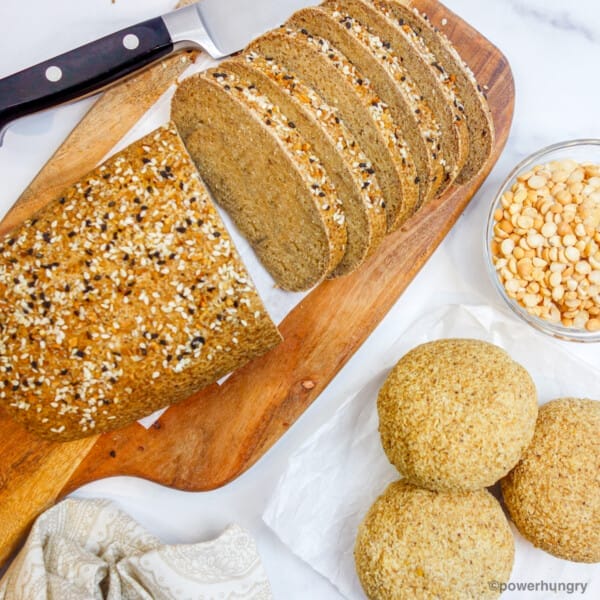
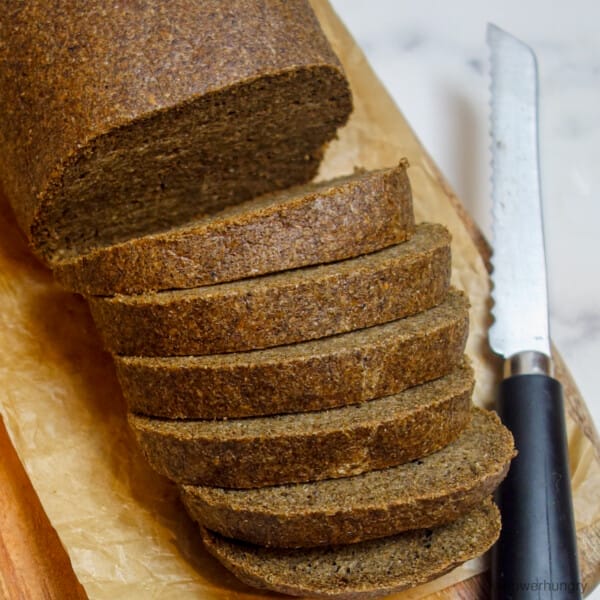
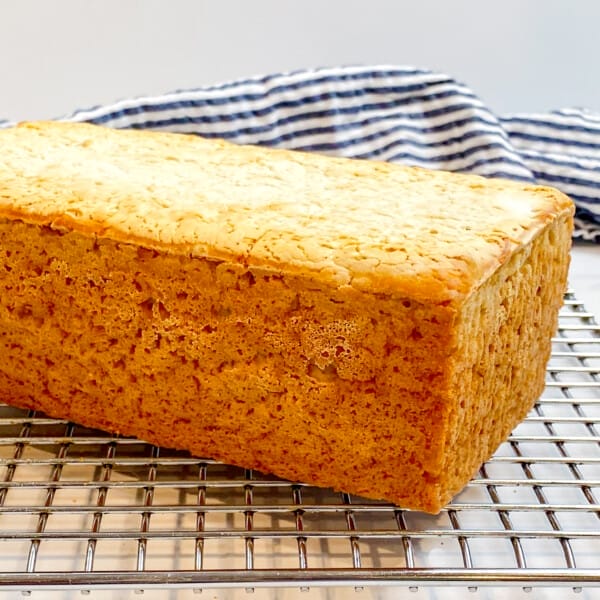
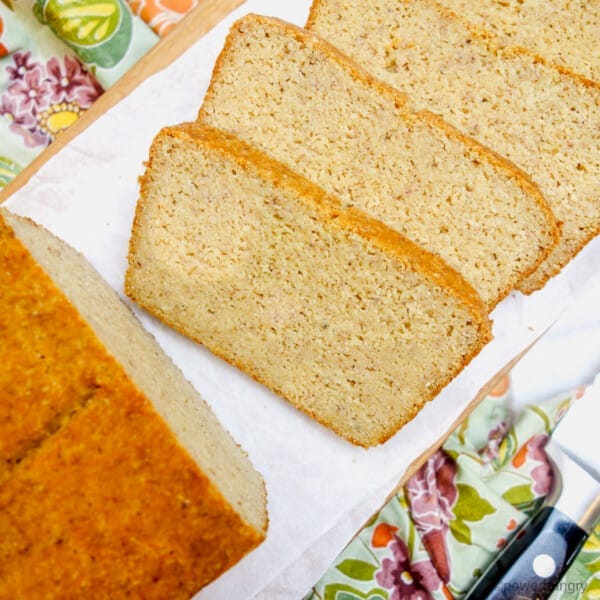






















I tried this but the Chobani vegan milk mixed with vinegar never did curdle. After waiting 30 minutes, I tried to bake the bread with it, and the loaf didn’t rise much, coming out only about an inch thick and unedible.
Hi Joan,
Oh no, so sorry to hear that. I have never used chobani milk… but it need not “curdle” for the bread to work, as the reaction occurs with the vinegar and baking soda. The lack of rise is more likely due to your baking soda is inactive.
First, thank you! I wanted to make my own gluton free vegan bread (allergies) so it was healthier and tasted better than the store versions, and came across your recipe. Simple to make extra and freeze. Do you think doubling or doing 1 1/2 the recipe would work? Just wondering about a bigger loaf size…
Hi Rachel, I am so glad that you like the bread! You can definitely try making it bigger, but I would only do 1.5. There is a danger of the bread collapsing or not getting cooked all the way through if you increase the size.
Thank you so much during this recipe for sharing this recipe! My son has a wheat and egg allergy and it has been so difficult for me to find a healthy bread alternative. I made the recipe and the bread came out very good, I am looking forward to trying different variations such as adding different types of nuts on the top:-)
What a wonderful mamma you are, Dulce! So glad that this recipe works for you both 🙂
This looks good. I will try this tomorrow.
Stupid question maybe, but is it possible to add raisins or dried cranberries?
Hi Colin,
I hope you like it! Not a stupid question at all re: raisins/dried cranberries. Yes! You can definitely add those or any other dried fruit (I would not add any more than 3/4 cup; 1/2 cup should be about right). Fresh or frozen fruit will not work as well (the liquid/moisture can make the bread soggy).
I tried this recipe today. I added one tablespoon of vegetable oil and a 1/2 tablespoon of agave syrup. I baked it my bread machine on the “bake only” setting. It turned out very well! I love the texture and flavor. Thank you for sharing your recipe.
Thank you so much for sharing your adaptations, Berretta, especially your successs in baking the bread in your bread machine. That is so helpful. I am so glad that you enjoyed the bread.
Nnnnoooo. It is not good. It comes out basically a loaf of oatmeal. It should be titled oatmeal loaf, not bread. It doesn’t have any sort of consistency of anything other than oatmeal. I like it better than regular oatmeal honestly kinda a hard dry oatmeal consistentcy but it doesn’t replace bread at all.
Hi Sean,
It sounds like you may have made this with oats rather than oat flour. You need to grind the oats into a fine flour to make the bread.
First recipe that did not Work.Sh.. happens
Nevertheless one of a dozen ist quite a good average ????????????????
Hi Agatha! Oh no, so sorry the recipe did not turn out. When you say it did not work, what happened ? I would be happy to help troubleshoot!
This is my hands down favorite bread. It is million times better than anything I can buy at grocers or at GF baking shops. Thank you 🙂
I made this recipe today. I followed the recipe instructions precisely and used a 9×5 inch bread pan. However, the loaf did not come out as a regular sized loaf; that is, the bread slices are narrow and not the size of a regular slice of bread. What am I doing wrong?
Hi Fraser, this loaf is not as big a loaf as say, a sandwich bread loaf. If you see my photos above, I think you’ll find that you’re loaf is about the size of my loaf when I make it, the final bread does not come to the top of the loaf pan. Short, you’re not doing anything wrong!
I made this with oat groats that I roughly grounded in a food processor and store bought oat milk, I really like the taste and texture especially considering how easy it was and definitely satisfied my cravings. Next time I might try adding some chopped walnuts and dates to make it even more richly flavored. Thank you so much for sharing this recipe with us!
That sounds so delicious Eunice! And brava for using oak groats to make the bread work. I’m so happy like the bread.